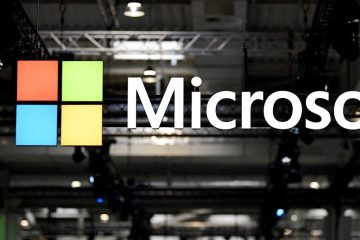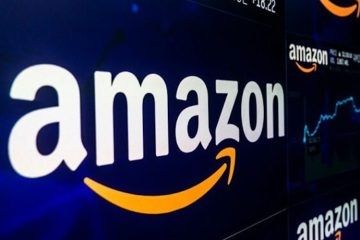Grocery Stocks Are Crashing After Amazon Buys Whole Foods For $42 Per Share

Whole Foods stock was halted for ‘news pending’… and now we have the answer – Amazon to acquire Whole Foods Market for $ 42/share in an all-cash transaction valued at ~$ 13.7b, including Whole Foods Market’s net debt.
With 9% of the float short this stock, we can only imagine the squeeze on this 27% premium over last night’s close.Full Statement:
Amazon (NASDAQ:AMZN) and Whole Foods Market, Inc. (NASDAQ:WFM) today announced that they have entered into a definitive merger agreement under which Amazon will acquire Whole Foods Market for $ 42 per share in an all-cash transaction valued at approximately $ 13.7 billion, including Whole Foods Market’s net debt.
“Millions of people love Whole Foods Market because they offer the best natural and organic foods, and they make it fun to eat healthy,” said Jeff Bezos, Amazon founder and CEO.
“Whole Foods Market has been satisfying, delighting and nourishing customers for nearly four decades – they’re doing an amazing job and we want that to continue.”
“This partnership presents an opportunity to maximize value for Whole Foods Market’s shareholders, while at the same time extending our mission and bringing the highest quality, experience, convenience and innovation to our customers,” said John Mackey, Whole Foods Market co-founder and CEO.
Whole Foods Market will continue to operate stores under the Whole Foods Market brand and source from trusted vendors and partners around the world. John Mackey will remain as CEO of Whole Foods Market and Whole Foods Market’s headquarters will stay in Austin, Texas.
Completion of the transaction is subject to approval by Whole Foods Market’s shareholders, regulatory approvals and other customary closing conditions. The parties expect to close the transaction during the second half of 2017.
The purchase of Whole Foods is Amazon’s largest acqusition in history:
Amazon expects to finance the acquisition with debt.
Amazon enters into commitment letter for 364-day senior unsecured bridge term loan facility in an aggregate principal amount of up to $ 13.7 billion.
Expects to finance deal with debt financing, which may include senior unsecured notes issued in capital markets transactions, term loans, bridge loans, or any combination thereof, together with cash on hand, co says in a filing
Goldman Sachs, BofA-Merrill Lynch to lead debt financing
And Kroger, Wal-Mart, Sprouts, and Target are plunging… (WMT -4%, TGT -5.5%, SFM -7.6%, KR -12%)
And European supermarkets are getting hammered –
*AHOLD, CARREFOUR, TESCO FALL TO LOWS ON AMAZON/WHOLE FOODS DEAL
*AHOLD DELHAIZE SLUMPS 6.8% IN AMSTERDAM ON AMAZON NEWS
With good reason probably. Grocery margin are 1-2% at best, and if Amazon can truly create smart stores with no check outs and cut employees in half they can kill regular supermarkets…
As Bloomberg’s Gadfly recently opined, Amazon will kill your local grocer…
But Amazon still has a ways to go — the online retailing behemoth has taken a slow, yet calculated approach to attacking the grocery store. After years of testing the AmazonFresh program in its Seattle hometown, it began expanding the grocery delivery service to other cities in 2013. Today, it delivers fresh fruit and meat in parts of New York, New Jersey, Pennsylvania, Connecticut, California, Washington and Maryland. It also delivers food through its Amazon.com website and its Prime Now program.
And even though research from Cowen & Co. pegs Amazon’s market share of food and beverages sold online in 2015 at about 22 percent, that overall online grocery market in the U.S. is pretty small. Out of the $ 795 billion Cowen expects Americans to spend on food and drinks this year, it estimates only about $ 33 billion of it will be spent online.
That’s because it has taken shoppers a long time to grow comfortable with buying their apples, chicken breasts and granola online when they can stop by a physical store on the way home from work and actually touch and smell the food they’re buying. Companies struggle to profit from the very expensive business of picking, packing and transporting fresh food to their customers. It’s much easier to mail a video game or book, which doesn’t have to be kept cold or free of bruises.
But for Amazon, the grocery business not only brings more sales, it could also make its business more profitable. People tend to buy groceries weekly or daily, so getting them hooked on delivery justifies sending trucks out more frequently. Then any general merchandise, like a book or toy, that Amazon sells along with the food adds to profits. And since Amazon will need more trucks for grocery delivery, it could reduce its reliance on shipping companies, which have contributed to soaring costs. For now, Amazon is likely to take added grocery costs on the chin, in hopes it will pay off down the line.
Growing its AmazonFresh and Prime Now offerings suggests Amazon is gearing up for the long haul in grocery. Though traditional grocers are not likely to see sales migrate to Amazon right away, that luxury won’t last. And just like bookstores, your local grocer could be toast.










